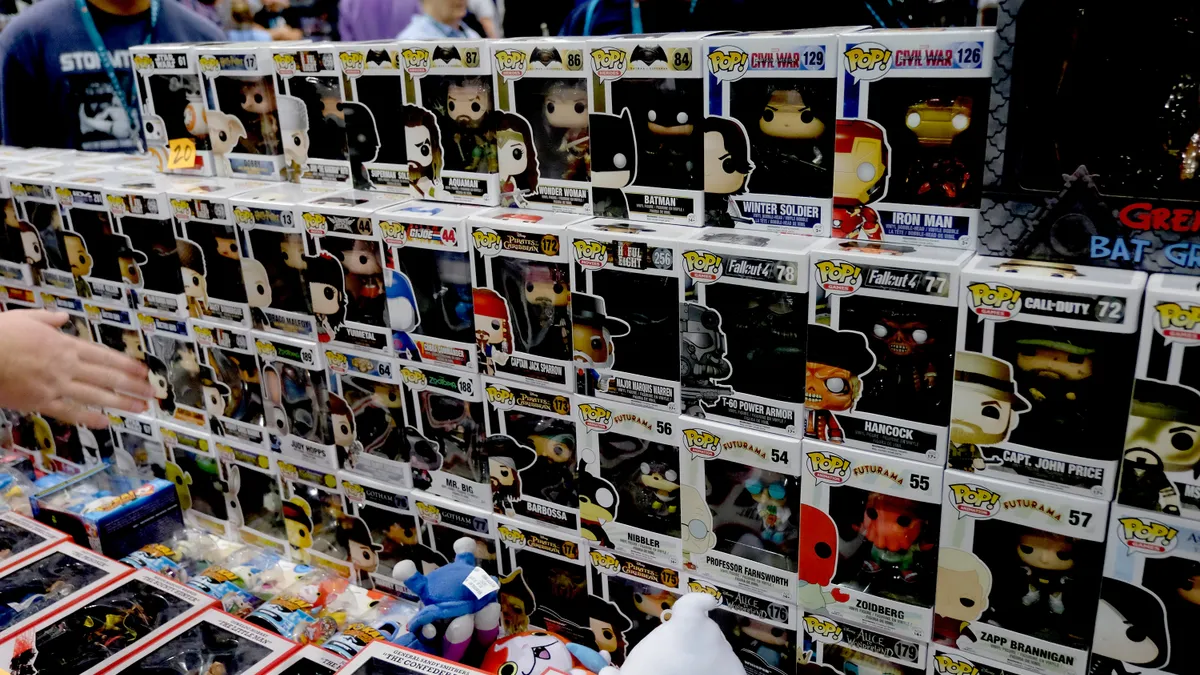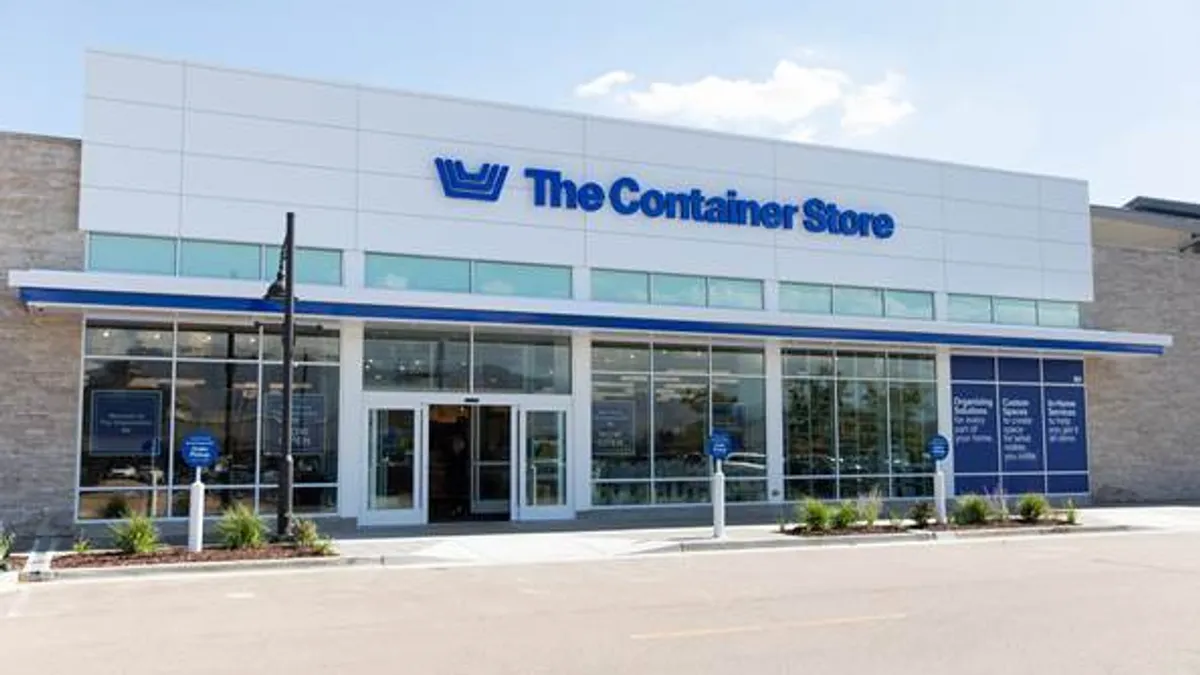The buy now, pay later boom had an inauspicious debut more than a decade ago.
In 2005, three Swedish entrepreneurs, Sebastian Siemiatkowski, Niklas Adalberth and Victor Jacobsson, decided to see if their installment payment loan service, then called Kreditor Europe and now called Klarna, would attract the attention of investors attending a Shark Tank-like contest in Stockholm.
As Klarna’s website points out, Klarna came in last place. A person in the audience, which included Sweden’s King Carl XVI Gustaf, came up to Siemiatkowski and told him he should pursue the idea because the banks would never do it. Klarna’s website asks for the man to come forward and identify himself because the founders have no idea who he is and presumably want to thank him.
BNPL has morphed from a shopping novelty to a multibillion industry on three continents in less than 20 years. Its explosive growth hasn’t been cheap. None of the major pure-play BNPL competitors, including Klarna, Affirm, Afterpay and Zip, currently is profitable. And some of their merchant clients are starting to wonder if they are paying hefty fees to the BNPL fintech companies for sales they would have gotten anyway.
At the same time, regulators such as Consumer Financial Protection Bureau Director Rohit Chopra have raised concerns about whether consumers are becoming too indebted from using the installment payment services. Plus, industry competition and consolidation are mounting, as new entrants flock to the U.S., where penetration rates for the installment financing service are lower than in other parts of the world. Achieving scale, though, isn't going to be easy or cheap.
“We welcome competition as it helps drive innovation which ultimately benefits the consumer,” David Sykes, Klarna’s head of North America, said in an emailed statement. “It’s also important that as more players enter the BNPL space, there needs to be regulation to ensure transparency and that the consistently high standards we operate to are followed and in place.”
Rise of BNPL
BNPL is a new take on the old layaway plan that’s been around for decades and is still offered by a limited number of retailers such as Sears and Burlington Stores. While layaway customers don't get the merchandise until they pay for it, BNPL borrowers get their goods after signing a short-term loan agreement that requires fixed payments typically in four installments every two weeks over six weeks. Consumers can avoid paying interest on their BNPL loans if they make their payments on time.
In the early 2000s, several critical trends emerged that led to the current BNPL consumer craze.
First, there was the financial crisis. Research from the Bureau of Labor Statistics shows that younger workers were hit especially hard by that recession. Unemployment for those ages 20 to 24 climbed to 11.3% in 2008, more than double the 4.8% jobless rate of workers 55 and older, the report said. As a result, it created a generation of workers who are debt-averse and are leery of credit cards. Coincidentally, that’s the same demographic being targeted by BNPL companies, who tout their service as being superior to credit cards.
“There was an overall uncertainty, all the way up to potential distrust in terms of 'Who can I really trust and have a good relationship with when it comes to our banking relationship?’” Marqeta General Manager Salman Syed said in an interview. “So, there was a massive opportunity in the market to be able to say, ‘Hey, look, let me offer you a tech-forward credit instrument that's going to be so different than what you've been used to in the past.’”
PayPal got into the BNPL business not long after Klarna's headstart, by acquiring a company called Bill Me Later in 2008. After the acquisition was closed, the San Francisco-based company changed the business’ name to PayPal Credit, which offers consumers a revolving line of credit they can use anywhere PayPal is accepted. PayPal began offering a Pay in 4 service, too, that’s similar to the offerings of BNPL rivals.
Technological advances also made it easier to build financial products like BNPL, thanks to the growth in machine-learning and the increased availability of consumer data, according to Affirm's president of technology, Libor Michalek.
“These technologies created the possibility to rethink credit," Michalek said in an interview. “We fundamentally believe that consumers, when armed with the information and the tools, make good decisions and want to do the right thing and we see that in the numbers.”
BNPL financing is expected to account for about $438 billion, or 5.3%, of global e-commerce transaction value, by 2025, up from $157 billion, or 2.9%, in 2021, according to a March report from the Worldpay unit of payments processor Fidelity National Information Services.
BNPL transactions accounted for 3.8% of the value of North American e-commerce sales in 2021, compared with 1.6% a year earlier, according to the report. In Europe, BNPL accounted for 8.1% of the continent’s e-commerce transaction value, per the report from the Jacksonville, Florida-based FIS.
BNPL growth comes with losses
“Consumer preference for BNPL is unsurprising in an environment where demand for and constraints to new consumer credit are high, especially for lower-income Americans,” according to an academic paper from Harvard Kennedy's Mossavar-Rahmani Center for Business and Government.
“Merchant perspectives, too, are wildly positive because merchants benefit significantly from the current business models of BNPL companies," the paper said. "With convenient access at point-of-sale (POS) — particularly in online sales — BNPL products help merchants drive sales.”
Many BNPL providers have to pay a hefty price to keep up with surging consumer spending on new technology and employees to keep their services working. As a result, their expenses are rising at a much faster rate than their revenue causing them to lose money, according to filings of the publicly-traded BNPL businesses with the Securities and Exchange Commission and other securities regulators. The losses show no signs of slowing in the near future.
“Right now, they're in a growth mode,” said Anil Goyal, president of Corserv, which issues payment cards for banks and other financial institutions. “So, it is expected they will be unprofitable. Their costs are going to rise (and) the acquisition (of customers) is going to become more difficult. It will be a hard battle for these companies to continue to grow and become profitable at the same time.”
Take Affirm. The San Francisco-based company reported net losses of approximately $430.9 million, $112.6 million and $120.5 million for the fiscal years ended June 30, 2021, 2020, and 2019 respectively, according to the company’s most recent annual report.
Affirm’s total operating expenses more than doubled to $1.25 billion in the fiscal year ended June 30, 2021, compared with $617.3 million in fiscal 2020. Sales and marketing costs skyrocketed from $25 million to $184 million between those years while technology and data analytics jumped from $122 million to $256 million. During that same period, Affirm’s revenue jumped about 70% from $510 million to $870 million, thanks to its well-known clients like Peloton, according to an SEC filing.
Klarna is in a similar position. As it expanded in the U.S. last year, it increased its U.S. customer count by 71% to 25 million consumers as of January, according to Klarna’s 2021 annual report. Its workforce expanded, too, with the worker headcount climbing about 50% to 4,789 full-time equivalent employees at the end of last year, up from 3,238 in 2020. Meanwhile, Klarna's total operating expenses climbed 70% last year to 15.7 billion Swedish krona ($1.6 billion), but total operating income rose only 38% in 2021 to 13.8 billion krona ($1.4 billion).
“In 2021 we have accelerated our ambitious market and product expansion plans entering five new markets and growing our product offering to include the shopping app in 18 markets,” the company said in the annual report, noting recent acquisitions as well.
Still, Klarna said its operating losses for the 2021 calendar year widened to 6.58 billion krona, or $688.85 million, from 1.63 billion krona in 2020, Reuters reported.
Similarly, Australia-based Afterpay, which became a unit of Square parent Block after a $29 billion acquisition last year, posted losses of AU$159 million ($112.8 million) in the company’s 2021 fiscal year ended last June. A year earlier, the loss was AU$22.9 million.
Meanwhile, Zip reported a 2021 loss of AU$653 million in the fiscal year ended June 30, 2021 compared with AU$20 million in red ink in the prior year. Revenue at Zip surged 150% to AU$403 million last year. Marketing expenses, though, skyrocketed from AU$9.5 million in the fiscal year ended June 30, 2020 to AU$71.2 million during the same period in 2021, according to a company filing. Both information technology and salaries and benefits more than doubled. Officials at Zip declined to comment for this story.
PayPal operates in the black as a whole though it doesn’t separately disclose the financial performance of its BNPL business. Given the company already has a sophisticated computer network in place, it likely isn’t facing the same sorts of losses that its rivals are experiencing, according to Syed.
“When you have such a large base, you can find so many different ways to monetize different services you can build,” Syed said. “You can package what you've already got, I mean, there's just gonna be so many opportunities for them.”
A PayPal spokesman declined to comment on the profitability of its BNPL business.
BNPL competition mounts
The rising competition might have something to do with the losses.
According to data from the New York market research firm Yipitdata, Affirm dominates the U.S. market with a 40% market share, based on payments volume, followed by Klarna with 19.6%, Afterpay with 16.4%, PayPal’s Pay in 4 offering with 11% and Zip with 4.2%. The universe of rivals is rounded out by smaller players that have been acquired or will be soon, including Sezzle, which was swallowed this year by Zip. Yipitdata ranks the players based on individual installment payments made.
By contrast, analysts at Bank of America rank the competitors by worldwide consumer downloads of the companies' apps. That ranking looks very different, with Klarna capturing a 60% share, as of the first quarter of this year, and Afterpay in second place with a 19% share, Affirm taking 16% and Zip grabbing 5% (PayPal isn't included in that ranking).
Consumers are getting so comfortable with BNPL that some are using it as a tool for managing common household expenses like groceries, luring even more competition to the market. Niche services are also emerging in markets like health care and education further spreading the BNPL gospel.
“You’re also looking at a point of sale finance market that is changing, and that will bring more competition to the fore that I think will potentially compress the margins of these buy now, pay later fintechs,” said David Morris, a financial services and payments analyst at Insider Intelligence.
Mastercard and Visa are now offering their own BNPL services and that will heighten the competitive pressure in the industry, Morris said. It's also likely to make buy now, pay later as a standalone product less profitable, he said.
Regulation is another headwind
As BNPL proliferates across different shopping arenas, it's spawning new worries for critics.
The Consumer Financial Protection Bureau began a probe of the BNPL industry last December after concerns were raised about its business practices by a group of Democratic senators and consumer activists.
A spokesperson for the federal agency didn’t respond to a request for comment on the status of its inquiry, but Chopra has shown he's willing to be aggressive with the payments industry.
Marshall Lux, a consultant with Boston Consulting Group, believes the CFPB should move faster on BNPL regulation. “It's the segment of the economy which is taking on the biggest amounts of risks," he said.
Lux, also a research fellow at Harvard Kennedy's Mossavar-Rahmani Center for Business and Government, notes that most BNPL borrowers are subprime. “This should rise higher in terms of the CFPB agenda,” he said.
Lux favors BNPL reforms that include requiring disclosure of all fees and rights at the point of sale to help consumers understand the “real cost'' of BNPL financing; credit reporting standards related to the financing; and data privacy standards and dispute settlement procedures for it.
Chopra and his Democratic allies in Congress as well as consumer groups have alleged the BNPL industry may be piling debt on consumers who can't afford it. "The CFPB is concerned about accumulating debt, regulatory arbitrage, and data harvesting in a consumer credit market already quickly changing with technology," the agency said in a December release.
That same month, Chopra sent letters to the biggest BNPL operators, including Affirm, Afterpay, Klarna, PayPal and Zip, demanding detailed information about their business practices and how they safeguard the confidential information that consumers provide to the companies.
Former CFPB Deputy Enforcement Director Lucy Morris said in an interview that the bureau is trying to make sure that consumers aren't getting in over their heads with BNPL.
“That doesn't mean that the companies are violating any laws,” said Morris, who is now a partner with the law firm Hudson Cook. “It just may be that the bureau wants to use this bully pulpit to make things better for consumers.”
Will the industry persist?
Acknowledging the industry's challenges, Mark Flamme, a managing director at the consulting firm AlixPartners, questioned the long-term viability of the BNPL industry. He suspects consumers missing payments will become a bigger problem over time.
“There's a real risk that consumers overextend themselves,” Flamme said. “I can go to 15 different websites (and) I could get 15 different short-term loans from a number of different players.”
Indeed, the BNPL industry is starting to slow. Data from Bank of America shows that global BNPL app download growth slowed to 21.4% in the first quarter this year, from 36.2% in the fourth quarter. Affirm performed the best in the quarter, with average daily downloads increasing 61.8% year-over-year, but that growth rate was down from 93.7% in the fourth quarter.
Meanwhile, Zip is struggling with nine consecutive months of negative yearly growth. The first quarter was Zip's lowest recorded quarter for app downloads since the third quarter of 2020, according to Bank of America.
As growth slows, it will become harder for BNPL providers to make money, partly because it will become more difficult to satisfy the demands of customers looking for the best deal. That in turn will make it tougher to meet the expectations of investors looking for a return on their investments. None of those efforts will be easy or cheap.























